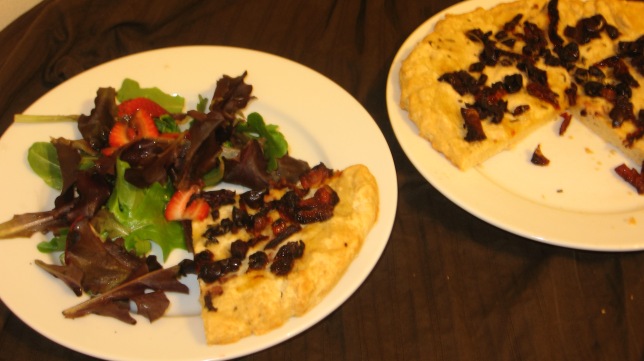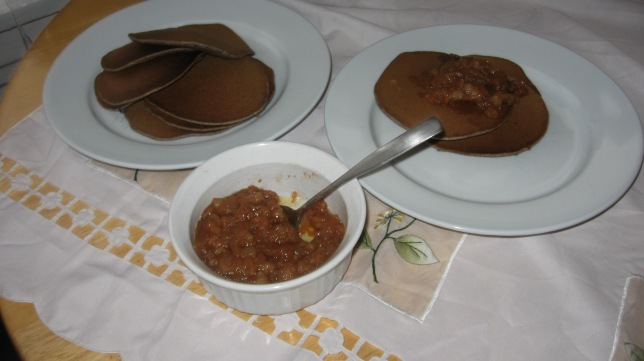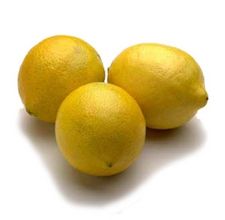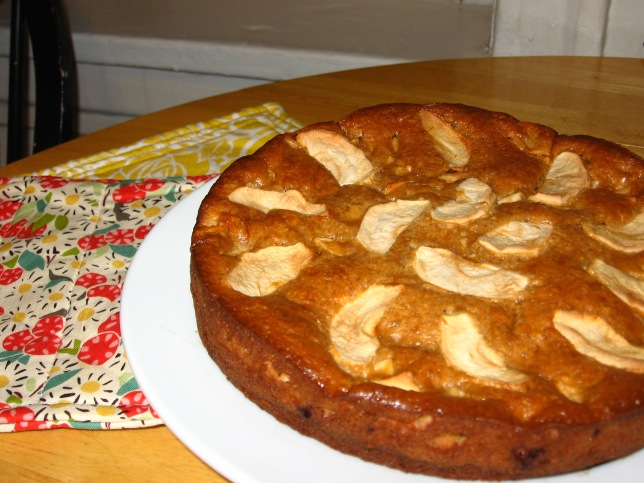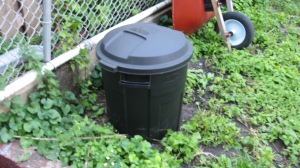
Want an easy way to reduce your carbon footprint, reduce landfill waste and create a magic elixir for your garden, house plants or container plantation?–then compost your vegetable food scraps. It’s easy and you can do it anywhere, even if you are an urban apartment dweller.
From the day we moved in to our new apartment in the city, Dustin has been anxious to start composting and we finally put together a system that I think will work. Previous to this move we’d mostly lived in apartments and it seemed impossible to try it–after all, composting is what you do when you have a back yard. But it turns out that composting your vegetable food scraps is something that you can do anywhere, even if you are an urban apartment dweller. We did attempt to “compost” at our last residence (a house in the burbs), but it mostly turned into a slow-rotting pile of scraps that we spent more time chasing the dog out of than actually getting to use for gardening. Having renewed my commitment to composting in an apartment, I vow to do it “right” this time!
While we do happen to have a bit of a yard space and therefore opted to go with an outdoor compost set up, there are ways to set up an indoor system too. What follows are a few composting basics and some tips for setting up a system that can work whatever your living situation.
Composting Tips for the Urban Dweller
Outdoor Composting: I think the hardest part of the whole process is simply choosing what kind of container you will use for your compost. The wooden bin with chicken wire is the old standby, especially if you think you’ll be staying put, but for many apartment dwellers, a more portable system is better.
You will need:
1. Small trash barrels (2) (with lids that will stay securely on). Either plastic or metal will do.
2. A drill with a 1/4″ bit to drill holes in the bottom, rim and sides of the barrel for ventilation
3. Compost Ingredients (see below)
This is the system that we went with (sorry for the picture quality!):
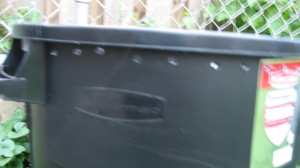
Drilling 1/4" holes
About Worm Compost (Vermiculture): This is a fascinating and useful approach to composting if an indoor system is your only choice (or if you just want to try it!). Having not tried it myself, I will not describe the process in detail, but the set up is similar. One of the greatest things about this set up is that it takes up very little space. You can even keep it under your kitchen sink for quick access when creating vegetable scraps.
You will need:
1. A medium to large plastic box/bin with a secure lid.
2. A drill with a 1/4″ bit to drill holes for ventilation.
3. Shredded newspaper for worm bedding
4. Red worms in a small amount of soil (from a fellow worm composter or online purveyor)
5. Compost ingredients (see below)
Compost Ingredients:
The key to composting is making sure you have the right balance of four ingredients:
1. GREEN Stuff–This is your vegetable food scraps, grass clippings (if you have them), weeds or other plant greenery.
2. BROWN Stuff–Dead leaves, wood chips/mulch
3. WATER–Just a little bit. You don’t want to much or you’ll get stinky compost. Just about as damp as a wrung out sponge should be about right.
4. Air–Ventilation will help prevent stink and turning the pile will help get the “greens” and “browns” mixed.
Special Tips:
1. Make sure you have a closed system with a secure lid. You don’t want to attract rodents!
2. Don’t let things get stinky unless you want the neighbors to complain. If you’ve got stinky compost and/or flies, you probably need more Brown stuff.
3. Remember to keep meat, dairy, and greasy stuff out of the compost. Stick to fruit, veggies, coffee grounds, tea bags, etc.
4. We buried our bin down into the ground a couple inches. We thought this would help deter rodents and keep it from tipping over in gusty wind if it isn’t weighted down.
With a little bit of patience, you’ll soon have rich compost for your plants and you can feel good about recycling your garbage into something that sustain the planet.
Check out these resources for further information, troubleshooting, and composting ideas.
Environmental Protection Agency
University of Illinois Extension
